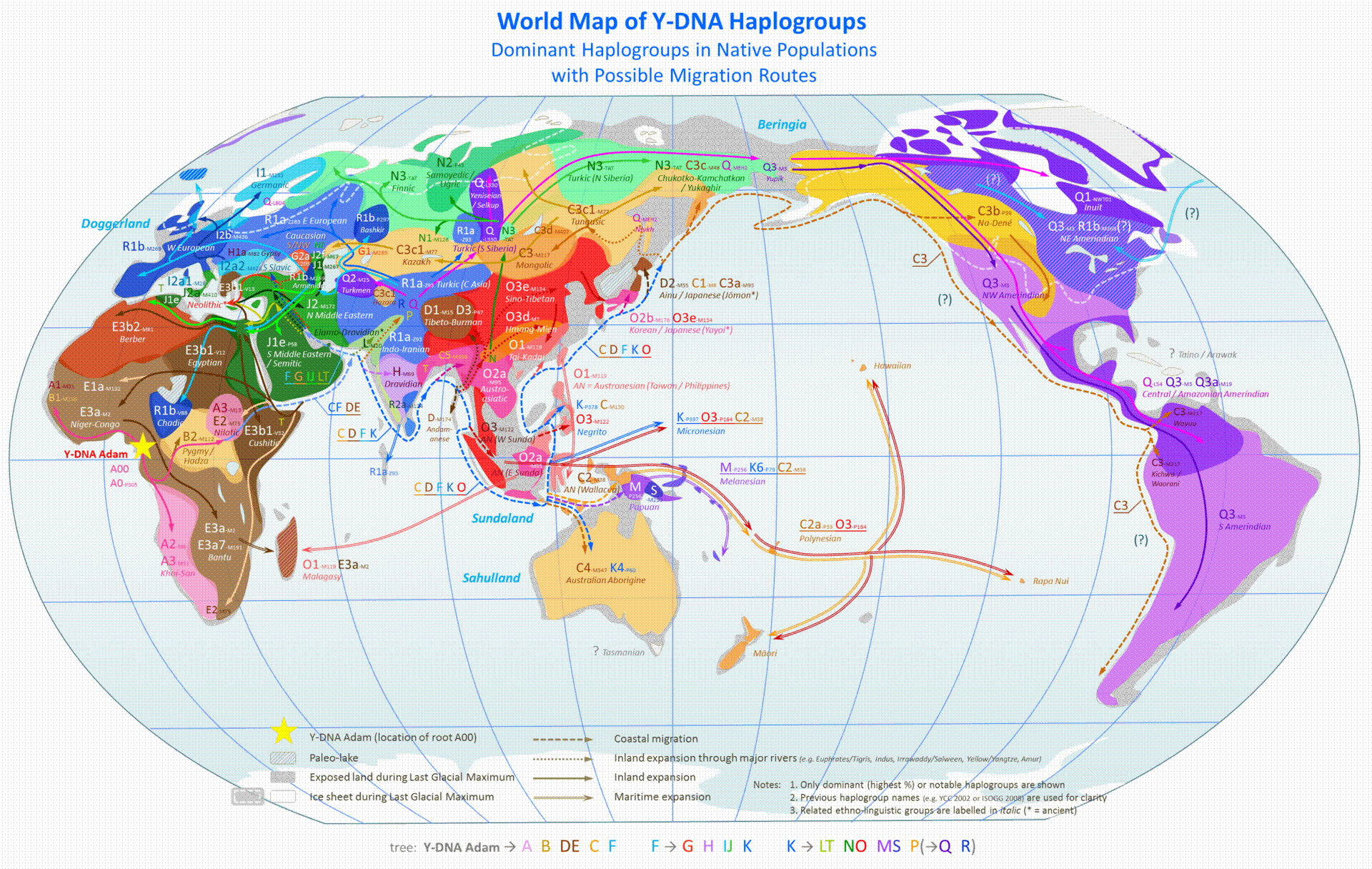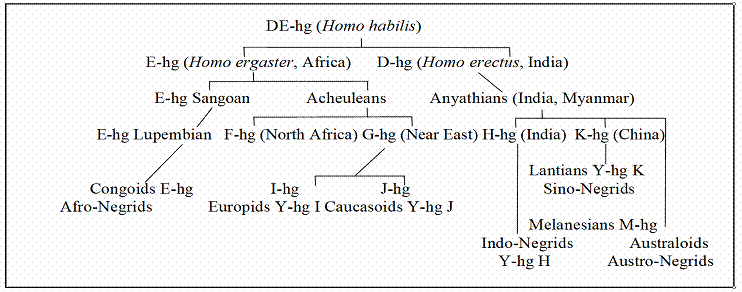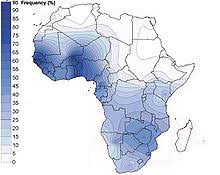|
|
Democritus Reformatorium Prehistoric Tribes Prehistoric Races Prehistoric Languages |
|
|||||||||||||||||||||||||||||||||||||||||||||||||
|
|
|
|
|||||||||||||||||||||||||||||||||||||||||||||||||
|
|
Spain France Italy Benelux Britain Celts Scandinavia Germany Baltic Slavic races Greece Anatolia |
|
|||||||||||||||||||||||||||||||||||||||||||||||||
|
|
|
|
|||||||||||||||||||||||||||||||||||||||||||||||||
|
|
European Human Racial Varieties Click on names of human varieties (with yellow
background) and read about their decomposition into ethnic subgroups Notice traditional fallacies and preconceptions concerning the traditional misleading categories of human
races Clickable terms are red on yellow background |
|
|||||||||||||||||||||||||||||||||||||||||||||||||
|
Table 1. The out-of Africa migrations of Y-DNA haplogroups
(Wikipedia Commons online) |
|||||||||||||||||||||||||||||||||||||||||||||||||||
|
|
The
Anthropogenesis of Negrids
All ethnic families are
interrelated with our remote forefathers, who descended from the equatorial
race of African Negrids. Their stock encompasses
almost half of humans stemming from prehistoric axe-tool makers,
plant-gatherers and preagriculturalists. Table 2
depicts their evolutionary splitting by means of a genealogic tree graph
pursuing the branching of Y-DNA haplogroups (their
abbreviations are written E-hg, I-hg etc. This graph omits the lineages of Lappids, Scytho-Ugrids and
Ural-Altaic flake-tool makers and concentrates only on the evolution of
equatorial dark-skinned Negrids, who mixed with
northern boreal races and gradually developed into light-skinned Caucasoids and Europids.
Table 2. The phylogenetic tree of plant-gatherers and axe-tool makers The forthcoming Table 3
attempts to record the parallel splitting of human stocks by the notation of generative grammars. It copes with
several unsolved incongruous discrepancies concerning the haplotypes
K, D and M. It revives several seemingly obsolete terms of archaeology such
as Kafuans, Chelleans, Abbevillians, Anyathians and Campignians classified as Littorids.
They are regarded as outdated but appear necessary for filling up certain
empty pigeon-holes in the evolutionary process. The category of Acheulean culture covers a period that is too large to
express subtle nuances of cultural growth. Archaeologists should follow Louis Leakey,
who specified eleven evolutionary stages of
the Chelleo-Acheulean ‘hand axe culture’.1
The chief problem has to do with the descendants of the Y-DNA haplogroups DE and D. They headed for
Table
3. The branching of dolichocephalic
cultures, races and haplogroups |
Table 4. The distribution of the African Bantu Y-DNA
haplogroup E-M2 African Dolichocephalic
Races
The ethnic dominant in the African
continent were the Bantu Negrids, who
preferred vegetal food and were confined to the ecotype of damp humid
rainforests. These predispositions specialised them as plant-gatherers and
banana-eaters. In the Neolithic such (pre)agricultural inclinations turned
them into slash-and-burn farmers. Now they
are classed as Negrids, Negroids,
Congoids, Congids or Congolids. The terms of blacks, Negroes, Melanodermi or Melanochroi
are applied also to other African races although the criterion of skin
pigmentation is often superficial and misleading. It is a secondary trait due
to subsequent hybridisation because the primary racial phenotype of black
races is determined by their skeletal osteology and
craniology. They belong to the lineage of Jolly’s robust herbivores with vegetal subsistence,
agricultural dispositions and axe-tool industry used for digging out plant
roots and slashing woody species. They were accustomed to upright gait and
nomadic life in clearings of bamboo rainforests in the tropical equatorial
zone. The rainforests of The black Negrids and their equatorial race engendered more than
one third of humankind that was predestined to plant-gathering, farming and
manufacturing hand-axe tools. A half of their populations abandoned tropical
regions and colonised the Eurasian continent with colder climate. Their
cultural morphology shows derived metamorphosed patterns caused by
interbreeding with Altaic hunters. Notwithstanding, their assimilative impact
could not uproot their filial allegiance to genetic axe-tool traditions. This
is how the axe-tool makers have formed a compact
group of cultures with tall stature, prominent dolichocephaly
(long heads), hypsicrania (tall skulls), euryprosopia (large broad faces), platyrrhinia
or chamaerrhinia (broad noses), brachycormia
or metriocormia (shorter or medium-size trunks) and
macroskelia (long legs, long lower extremities).
Their Eurasian, Siberian, Indic and North American splinters lost much
of this genetic dowry. They were all children of the new cultural Acheulean cultural unity that struck roots in Extract from Pavel Bělíček:
The Differential Analysis of the Wordwide Human Varieties. Prague 2018, pp. 11-13 |
|
||||||||||||||||||||||||||||||||||||||||||||||||



